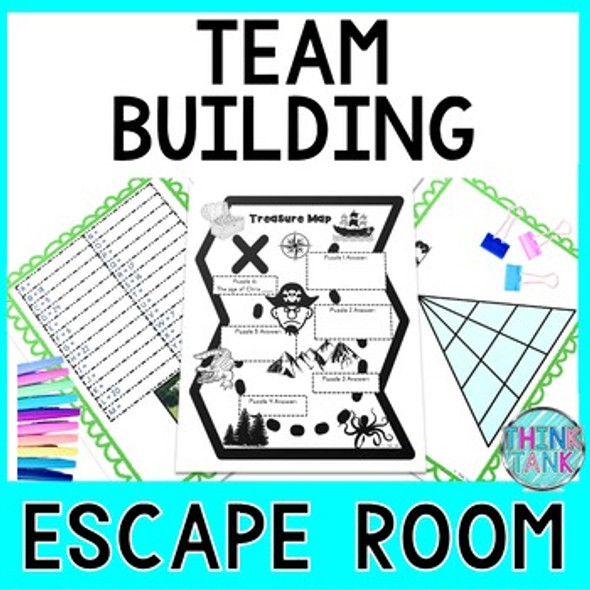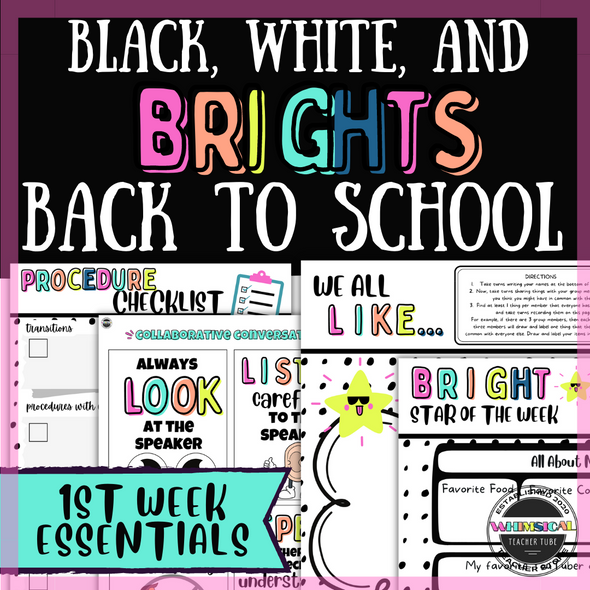Description
Using an Escape Room to welcome the students back into school is an innovative and exciting way to structure the first day back after the long Summer break and focus them in a hands on and interactive approach – perfect for all grades.
Each of the activities has been designed to support students in the following areas:
- Getting to know the classroom and resources available
- Getting to know other students and developing new friendships whilst strengthening others
- Reviewing prior learning and achievements
- Planning for new learning and target setting
- Setting new targets with a step-by-step SMART approach
- Reflecting on what makes a good learner
- Celebrating achievements for the year ahead
It also supports the teachers in being able to:
- Get to know each student individually in the way they work through the challenges
- Get to know each student through their responses to each of the challenges
- Understand friendship groups within the class and plan appropriately to develop the social “make-up” of the group – putting in support and interventions to enable the group to work more cohesively
- Set targets for every student in the class – based on their own wishes and needs.
- Know what makes your students thrive and learn!
The aim of this Escape Room is to provide an opportunity for students to complete a range of activities which would normally set the year off – but in a very different context – more exciting, more interactive and using the past experiences to support future learning.
Included within this Escape Room:
- Pupil Answer Book (Code Key Booklet)
- Instructions for teachers
- Target Planning workbook for students
Before beginning, you will need to prepare the following:
- A copy of the Pupil Workbook for each student
- A copy of the Target Setting Booklet for each student (to be used, if required by the teacher, after the Escape Room has been completed)
The activity begins with the teacher determining if each of the activities requires a time limit – developing a sense of urgency in completing each of the activities. There are 10 challenges to complete – each focusing on a different element of being back in school.
The 10 activities are designed to develop the following outcomes:
- Challenge 1: Classroom plan – enabling students to know where everything is stored and how the room is organised
- Challenge 2: Seating plan – to know where students sit and to find out the names of new students to the group – support social skills and introducing students to one another
- Challenge 3: Venn diagram of friendship – students place the name of their peers in one of three sections – people they already know, people they already know but would like to know better, people they do not know – yet!
- Challenge 4: Interviewing students who appear in zone 3 of the Venn Diagram from challenge 3 – people who they do not know -yet!
- Challenge 5: School subject wordsearch and sequencing the subjects in order of their own preference from most to least favourite
- Challenge 6: Most memorable moments in the previous academic year
- Challenge 7: New Academic Year Targets for learning – thinking through why this target is important to them and how it will support future learning
- Challenge 8: Texting future self with potential achievements in the new academic year – thinking ahead to what they will achieve and how they achieved it
- Challenge 9: Movie storyboard – identifying four scenes which students will hope to happen in the next year which shows their learning and development
- Challenge 10: Reflections on what makes a good learner
When all 10 activities are completed, the students will have made friends within their new class, know one another better, have thought about what made them successful in the previous academic year and set targets for the new school year.
Teachers can then use the additional SMART Target Setting booklet to support students break down their targets into manageable and measurable “chunks” to achieve success.
Setting up the Escape Room
- Students are to work on their own – but can move freely around the room to complete each of the challenges
- Each student should have a Code Key Booklet and add their own name
- Turn to Challenge 1. Agree with the children a set time to complete the problem in – this ensures that the children stay on task and maintains the Escape Room element of working under pressure.
- At the end of the time, children should have filled in the Code Key in their booklet. The teacher can then check the accuracy of all the students and talk through the responses the student might have – enabling them to get to know their new students better.
Running each challenge:
This Escape Room encourages the students to move around the room, getting to know both it, and the people within it. The included instruction booklet gives full details on how each of the Challenges should be introduced to the students.
Target setting workbook
Within this Escape Room, we have also included a Target Setting workbook which takes the targets the students have set for themselves and provides a further breakdown, visually, of how they can be supported in creating a step-by-step approach to achieving each one.
Each target has its’ own sheet.
Each student should be provided with their own booklet – but the whole class can complete their personal targets at the same time.
- Write the overall target in the main box
- Think through the smaller steps of how they will achieve the target.
- What should they be doing first? This first step should be placed in the lowest target board on each sheet, so that as they add more targets and move up the sheet, step four is below the main target.
- Small step 1: What should this be? What will this lead to if successful? Why? When will this be achieved? Set a date.
- What would be the next step if that is successfully achieved? When will this be achieved – set a date.
- What would success look like at this point? What would the third step be?
- The fourth step should lead the students to being ready to achieve the overall target.
- Make sure that the overall target is achievable, and the smaller steps are SMART (Small, measurable, achievable, relevant and time related)
- As the children progress through their learning journey, they can color the thermometer showing the progress they have made in achieving their target.
Teachers should build in time for students to go back and look at their targets and review their progress. This could be once a month for ten minutes to review progress and find evidence to show that it has been achieved.
The Escape Room should last for at least 2 hours – and can make up the first day of being back in school.
Best wishes
INSPIReducation



























